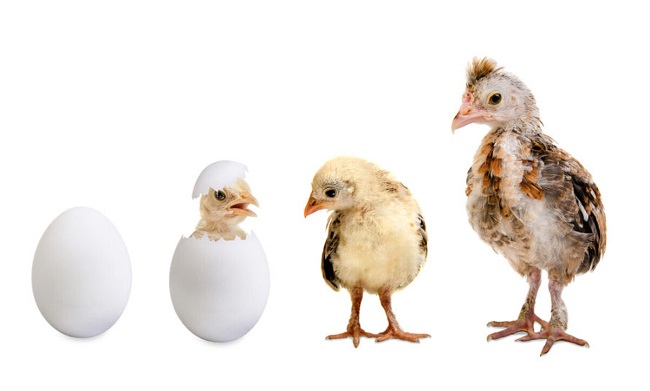Chickens are fascinating creatures that undergo various stages of growth from hatching to maturity. If you’re raising chickens or considering starting a backyard flock, it’s essential to understand the timeline of their growth and development.
In this comprehensive guide, we’ll delve into the topic of how long it takes for chickens to grow, exploring the different stages, factors that influence growth, and key milestones in their development.

Stages of Chicken Growth
Here are the stages of chicken growth:
Read Also:
Chick Stage
Hatching: Chickens start their journey as eggs and typically take around 21 days to hatch.
Brooder Period: After hatching, chicks need to be kept in a warm and controlled environment called a brooder. This stage lasts for approximately 4 to 6 weeks.
Juvenile Stage
Feathers Development: Chicks begin to grow their feathers around 2 to 3 weeks of age. This process is known as feather development or feathering out.
Growth and Feeding: During this stage, chicks experience rapid growth and require a balanced diet to support their development. It usually lasts from 6 to 16 weeks.
Pullet Stage
Sexual Maturity: Around 16 to 24 weeks of age, female chickens, known as pullets, start reaching sexual maturity. They may begin to lay their first eggs during this period.
Continuing Growth: Although pullets are sexually mature, they may continue to grow in size and weight until they reach full maturity.
Rooster Development
Male chickens, or roosters, go through a slightly different growth pattern compared to pullets. They develop larger combs, wattles, and more prominent feathers.
Factors Affecting Chicken Growth
Several factors influence the growth rate and timeline of chickens, including:
Breed: Different chicken breeds have varying growth rates. Some breeds mature faster than others.
Nutrition: A well-balanced diet with proper nutrients, including protein and minerals, is crucial for healthy growth and development.
Environment: The quality of the living environment, including space, temperature, and ventilation, can impact the growth rate of chickens.
Genetics: Genetic factors play a role in determining the growth potential of chickens. Selective breeding can affect growth rates and desirable traits.
Average Time for Chickens to Reach Maturity
The average time for chickens to reach maturity depends on various factors, including breed and purpose (meat or egg production). Here are some general guidelines:
Egg-Laying Breeds: Most egg-laying breeds reach sexual maturity and start laying eggs around 16 to 24 weeks of age.
Meat Breeds: Chickens bred for meat production, such as broilers, typically reach market weight between 8 to 12 weeks.
It’s important to note that individual variations and specific breed characteristics can impact these timelines.
Read Also:
Conclusion
In conclusion, the growth process of chickens involves several stages, starting from hatching to reaching maturity. The time it takes for chickens to grow varies depending on factors like breed, nutrition, environment, and genetics.
Understanding the different stages of chicken growth and the average timelines can help you plan and care for your flock effectively.
Whether you’re raising chickens for eggs, meat, or as backyard pets, providing optimal nutrition, a suitable living environment, and proper healthcare will contribute to their healthy growth and development.
By considering these factors and monitoring their progress, you can ensure the well-being of your chickens throughout their growth journey.
























